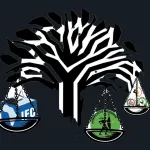As economies around the world restart, we have a once-in-a-generation opportunity to make tangible changes that will have a positive impact for years to come, and we must seize it.
In light of the climate emergency, as well as the rising significance of responsible resource use and environmental sustainability, the concept of “circular economy” (CE) has emerged as an alternative model of production and consumption. CE promotes the responsible use and conservation of finite resources for economic development, job creation and entrepreneurship, while minimising the impact on the environment.
Quite simply, I believe CE to be a crucial tool in mitigating the impact of the climate crisis on the African continent, and that renewable energy should be a pillar of CE. Combining renewable energy with CE will yield better results when it comes to achieving economic resilience as well as a green and sustainable recovery post-pandemic.
The economic impacts of the climate crisis are already felt as Africa is hit by extreme weather events, which puts a strain on the already fragile social safety nets and infrastructure. Figures from the Africa Climate Policy Centre show that for a global temperature rise of between 1°C and 4°C, the African continent’s GDP is predicted to decrease by between 2.25% and 12.12%, respectively.
Currently, many economies are spending 2% to 9% of their GDP in responses to extreme weather events such as floods, droughts and landslides – an expenditure which hinders their post-pandemic recovery.
For African countries, CE solutions can be leveraged to help achieve climate action commitments vis-à-vis the Paris Agreement and the UN Sustainable Development Goals. Moreover, CE offers an opportunity to tackle issues such as poverty, weak infrastructure and unemployment, which have hindered economic development for decades. We should not squander the opportunity to rebuild green and more resilient economies across Africa, and trigger new market potential by implementing CE-friendly policies and initiatives.
Here, renewable energy plays a vital role as an enabler of CE. Africa’s electricity demand is estimated to more than triple by 2050, and renewables are expected to rise to two-thirds of the continent’s total power generation mix. Increasing investment in renewable energy sources contributes to moving away from present day carbon-intensive power generation to future low-carbon energy sources.
Renewable power generation can go hand-in-hand with CE, especially in support of strategic sectors such as agriculture. For instance, elevated solar photovoltaic panels are already being used to shelter crops, referred to as agro-photovoltaic or APV projects. APVs can increase farmers’ yields while conserving the land space used for solar panels, particularly in confined areas such as Africa’s crowded urban spaces; power and food off the same land has to be a good thing
Renewables can also be deployed to power productive appliances, such as in the recovery and reuse of waste streams, helping African economies address their energy and water supply challenges. The market for such solutions is constantly growing, with the potential for increased scalability through asset financing and sharing models: currently, the serviceable market for solar water pumps in sub-Saharan Africa alone is worth $456-million and is estimated to grow to $1.6-billion by 2030.
However, renewable energy sources can be intermittent. This means that if Africa wants to invest in a CE future that is based on renewables, it will also need to invest in clean energy storage for use when the sun stops shining and the wind stops blowing.
Technological innovation is key in general, and at Groupe Filatex we take pride in our dedication to investing in pioneering projects that foster a more sustainable economy for Africa. One example is our new 200 Solar GEM® ‘plug-and-play’ photovoltaic panels, which we recently launched in Madagascar in partnership with Akuo Energy, a French green power company. The pre-assembled and pre-wired units can be deployed in just 30 minutes and folded away in 45 minutes, allowing them to be relocated between spells of harsh weather conditions, providing protective solutions in territories with unstable environments, helping reduce crop losses and agricultural product waste.
We will keep working hard to make sure our green energy projects help light up the way towards a circular economic model for Madagascar and Africa, and I strongly encourage governments, stakeholders and business leaders to earnestly consider CE as a viable model for Africa’s sustainable socioeconomic development. BM















Comments - Please login in order to comment.